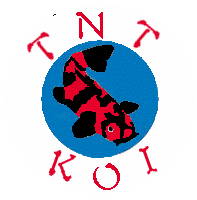


|
For Sale |
you have? Koi Types |
for the first time? |
|
|
|
|||
|
Koi And Koi Ponds Shipping Koi Information Koi Food Koi Ponds & Water Gardens Water Conditioners Filters Pumps Ultraviolet Sterilizers Pond Accessories Pond Plants Check Out Our Clicking Here 
. . . . . . . . . . . . . . . .
|
Koi Keeping:
Circle Radius
= 1/2 of Diameter
Pond Volume
Once you have figured out your pond gallons, using appropriate Pumps and Filters will help A healthy koi pond should not have any rocks or gravel in the pond itself. This is a haven for bad bacteria, eventually turning the entire pond system toxic. The optimum environment for koi is a recirculating system that has good filtration, both mechanical and biological. It is essential to backwash or flush the filter twice a month, using pond water. Tap water is never used to “clean” the filter, and it’s media. The pond water should be tested weekly, for ammonia, nitrite, and nitrate, while it is going through the process of establishing the bio-filter. After the bio-filter is established testing once a month is sufficient. Koi do not have a stomach. Feed smaller quantities more frequently for better nutritional absorption. Feed only as much as the fish will eat in about 3 to 5 minutes. Koi pellets should be fresh and used within three months to prevent oxidation of the food. Adding water plants can help keep the water clear of microscopic algae. They provide shade to the pond and compete with algae for the nitrates in the water. Larger koi over 10 inch, love to eat water plants, and can do a lot of damage to them. Daily Maintenance
Any detritus or mulm which accumulates at the bottom of the pool should be removed. Once every 2-3 weeks clean the filter. Using pond water to flush filter media. Take care not to overfeed. Koi keeping
supplies:
It is very
simple to keep Nishikigoi if you have equipment for filtering and cleaning
water. It is advisable to consult a Koi dealer or specialist as to which
type of filter is most suitable for you. The most important things to beware
of are:
KOI STRESS:
Water Quality:
|
|||||||